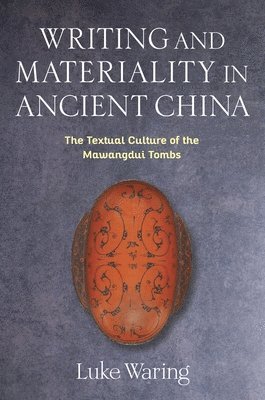
Fler böcker inom
- Format
- Inbunden (Hardback)
- Språk
- Engelska
- Serie
- Tang Center Series in Early China
- Utgivningsdatum
- 2025-10-28
- Förlag
- Columbia University Press
- ISBN
- 9780231219563
Writing and Materiality in Ancient China
The Textual Culture of the Mawangdui Tombs
Inbunden,
Engelska, 2025-10-28
561
Ännu ej utkommen – klicka "Bevaka" för att få ett mejl så fort boken går att köpa.
Övrig information
Luke Waring is an assistant professor of Asian studies at the University of Texas at Austin.
Du kanske gillar
-
Peak Human
Johan Norberg
Inbunden -
Peak Human
Johan Norberg
Pocket -
Genocide Bad
Sim Kern
Häftad
